Purple may possibly be the perfect garden color. It is the color of royalty, which is obvious when you see it reigning supreme over the rest of the garden. At the same time, it's a great mediator. It blends well with the cool side of the color wheel but is surprisingly at home with reds, oranges and yellows as well. It's a subtle but effective foil against greens or whites, and in its deepest iteration, it can even substitute for black. And fall and spring are good times to time to plant long-lived purple perennials, such as sages and lavenders.
Join me on a tour through U.S. gardens from coast to coast, from formal spaces to cottage gardens to Mediterranean-inspired landscapes, and see how adding my all-time favorite color to your design just might make your own garden the jewel of the neighborhood.
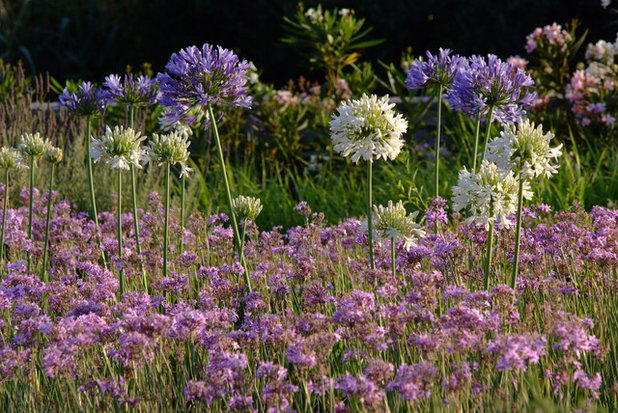
Carolyn Chadwick
Experiment With Color Combinations
While mixing greens or reds can be tricky, combining different purples is usually an easy task. Though purples don't generally clash, when in doubt, go with shades that are similar in tone or hue but vary in intensity (think of the varying shades on a color sample from the paint store).
Matching a purple that has a pink undertone, such as
society garlic (Tulbachia violacea), with a purple that has a blue undertone, such as
African lily (Agapanthus africanus) results in mix that highlights both colors. White varieties of African lilies scattered throughout a planting bed also help bridge the gap between the two shades of purple.
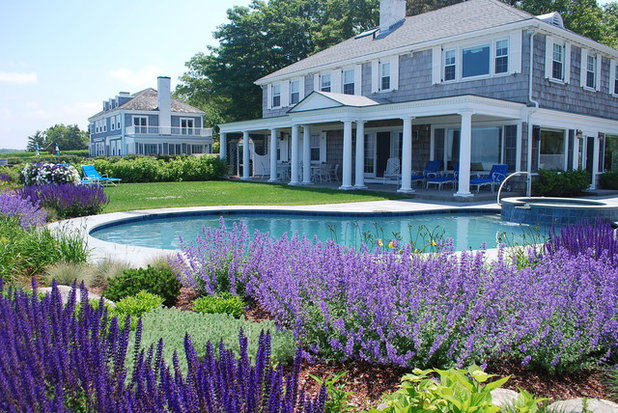
Elliott Brundage Landscape Design
Deep, dark purples, like
'May Night' salvia, and light, airy lavenders, such as 'Walker's Low' catmint, are a classic blend. Try planting them in alternating beds to create a tapestry effect or intermingle them for a more informal look.
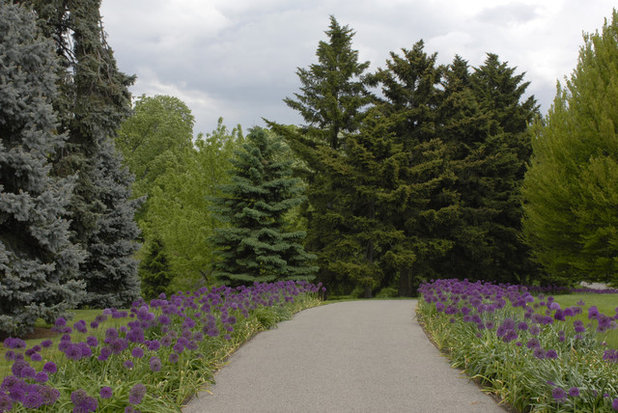
The New York Botanical Garden
Deep purple flowers can be wonderfully moody, but the dark color can sometimes get lost when surrounded by a sea of evergreens. If your purples don't stand out, look for a plant with a slightly brighter flower, such as this aptly named
'Purple Sensation' allium.
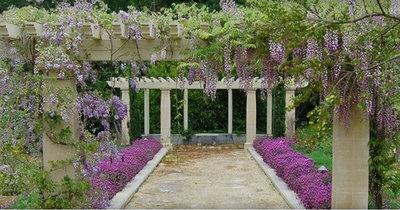
Aitken and Associates
Double rows of pinkish-purple
rock cress (Aubrieta deltoidea) immediately grab your eye in this garden — it looks like someone outlined the boccie ball court with a bright highlighter. With such a strong focal point, you might overlook the other purple accents in the space until you notice how well the lightest lavender wisteria overhead frames and complements the bold color below.
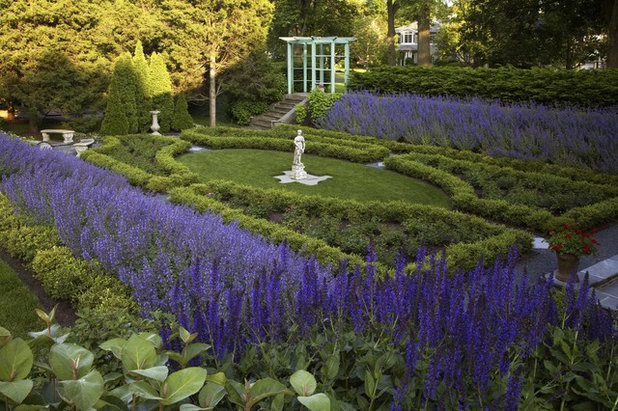
Schmechtig Landscapes
Add Purple to Both Formal and Informal Gardens
Borrow an idea from the fashion world and create a color-block pattern in purple to enliven an otherwise traditional, and somewhat staid, formal garden. Boxed in by evergreens, the purple blooms almost look as if they were painted in between the lines.
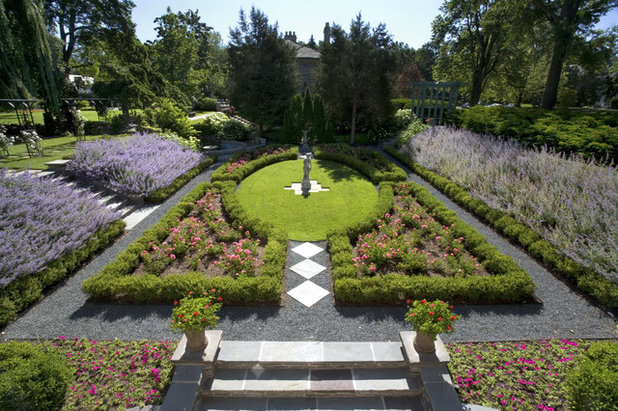
Schmechtig Landscapes
You can also use a looser purple bloomer like this
catmint (Nepeta) or Russian sage
(Perovskia atriplicifolia) in a similar formal setting. The evergreen borders help keep the plants in check when you want a formal look ...
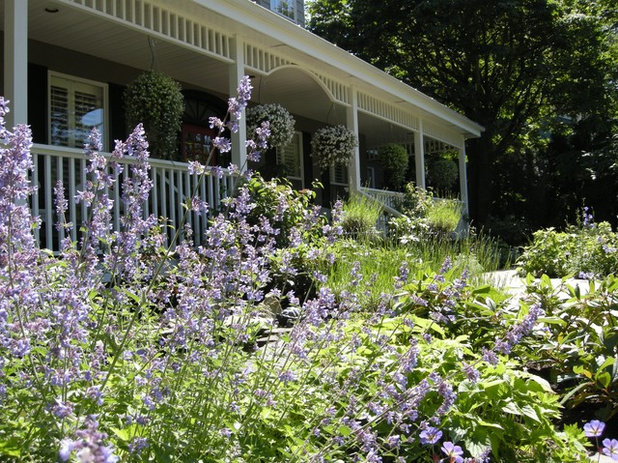
... but these blowsy purple-spiked plants also look perfectly at home when let loose in an informal cottage garden. Bordered by white fences instead of boxwood and packed closely together with other perennials, the plants are completely changed.
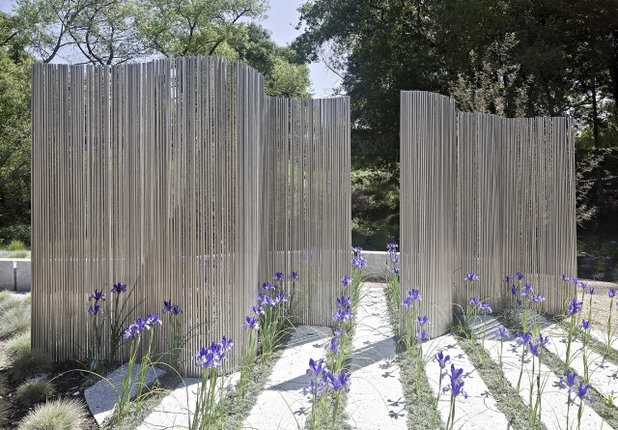
WA Design Architects
Looking like rows of soldiers standing at attention, these irises add a burst of color that sets off the modern metal sculpture in this contemporary garden.
TIP: Choose a purple with blue undertones to use against a silvery metal for a cohesive look.
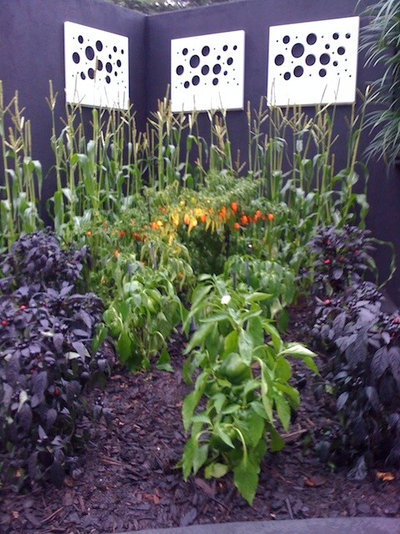
JDLDESIGN
Consider Purple Hardscaping
Painting a wall deep purple gives a vegetable garden a modern touch and showcases the striking color of the deep purple basil.
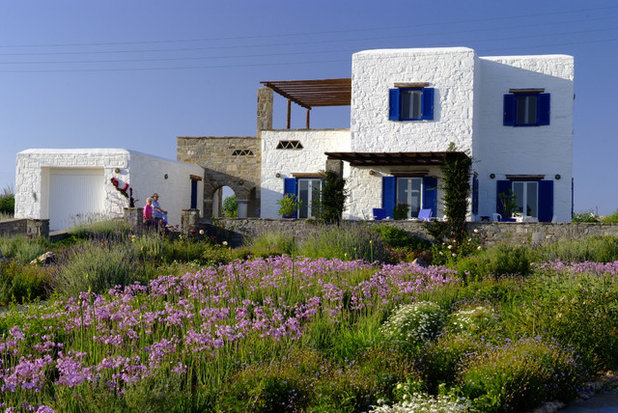
Carolyn Chadwick
Find the Best Purple for Your Climate
Society garlic
(Tulbachia violacea),
oleander (Nerium oleander) and common
lavender (Lavandula angustifolia) are tough plants that need lots of sun but little water, making them ideal for a Mediterranean climate.
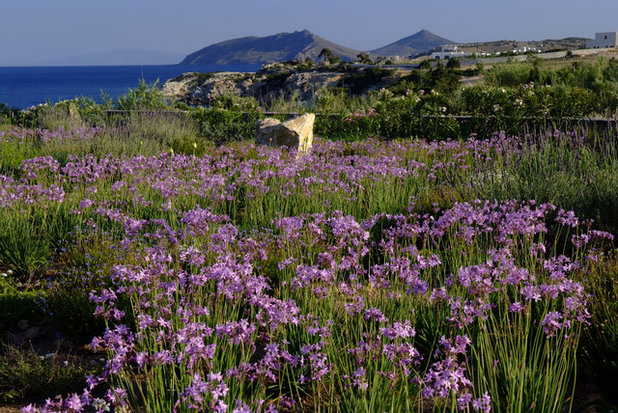
Carolyn Chadwick
Try this combination of sun lovers in dry areas of the garden in zones 7 to 10 or use lavender alone anywhere in zones 5 to 10. Society garlic is also a good choice at the coast.
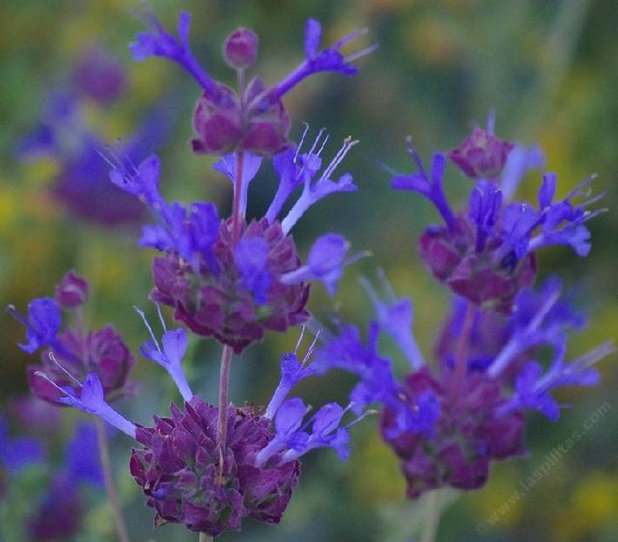
Las Pilitas Nursery
A native to California,
'Celestial Blue' salvia, also known as purple sage, has brilliant purple-blue blooms in summer. Though salvias generally hail from hot, dry climates, they also grow well in gardens that receive more rain. Simply place them where they will get a good dose of sun and do not give them any supplemental water.
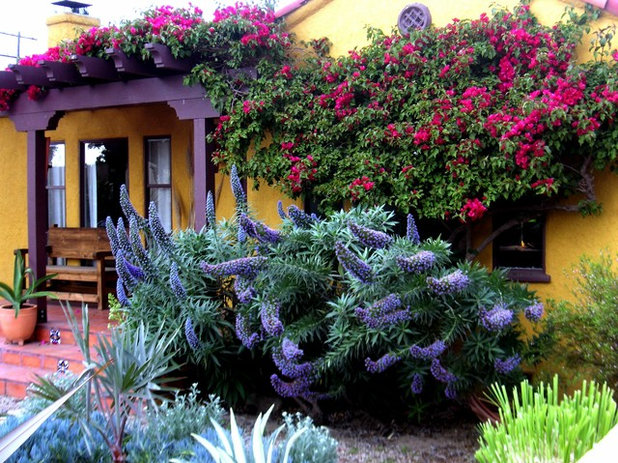
CARL BALTON + ASSOCIATES
Pride of Madeira (Echium candicans) is a purple showstopper that blends easily with the hot pinks of bougainvillea in tropical gardens.
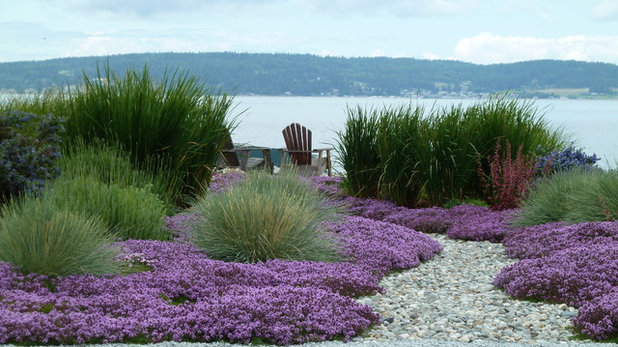
Lankford Associates Landscape Architects
Red
Mother of Thyme (Thymus serphyllum) grows well in a variety of climates, including the often harsh environment found along the coastline. For the best show, give these plants lots of sun, just a little water and a place to show off!
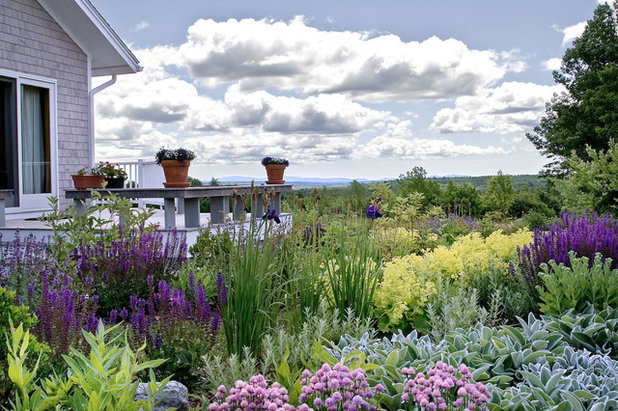
Matthew Cunningham Landscape Design LLC
Purple plants may be considered a standard in warmer regions, but they are also at home in colder climates. This Maine garden is filled with a mix of perennials, but it's the purple salvia that stands out.

Matthew Cunningham Landscape Design LLC
In a colder climate, you also have the perfect opportunity to experiment with a huge variety of purple bulbs and tubers. Alliums, which come in a number of different shades of purple, are always a good choice, or you can go crazy with a mix of purple tulips. Irises, with their many different shades of purple, are always a garden stalwart, but also consider the various purples offered by early spring bloomers, like
crocus and
grape hyacinth.





